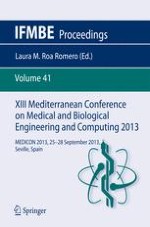2014 | OriginalPaper | Buchkapitel
Dystonia: Altered Sensorimotor Control and Vibro-tactile EMG-Based Biofeedback Effects
verfasst von : C. Casellato, S. Maggioni, F. Lunardini, M. Bertucco, A. Pedrocchi, T. D. Sanger
Erschienen in: XIII Mediterranean Conference on Medical and Biological Engineering and Computing 2013
Aktivieren Sie unsere intelligente Suche, um passende Fachinhalte oder Patente zu finden.
Wählen Sie Textabschnitte aus um mit Künstlicher Intelligenz passenden Patente zu finden. powered by
Markieren Sie Textabschnitte, um KI-gestützt weitere passende Inhalte zu finden. powered by
Dystonia has been associated with injury to the basal ganglia, in particular to the putamen and globus pallidus, even if there is evidence that other brain areas including cerebellum, brainstem, or sensory cortex can be causes of dystonia. Although dystonia is regarded as a movement disorders, several sensory phenomena occur. This suggests a dysfunction ascribable to a defective central processing of sensory inputs leading to a distorted afferent information causing a fixed input-output mismatch in specific motor programs. Still little is known about the altered sensorimotor integration in dystonia, therefore the need for a deeper investigation and for optimal complementary treatments is strong. We propose the use of the biofeedback technique as an exploratory tool and a possible future rehabilitation instrument. In this framework, the aim of our study is to investigate, in children with dystonia, the ability to voluntarily and selectively control the activation of a target muscle at different levels of the upper limb kinematic chain by means of a EMG-based vibro-tactile biofeedback. These tests should shed light on how an additional proprioceptive information affects the motor outcome in dystonia compared to the healthy behavior, both in kinematic and electromyographic quantitative terms.
